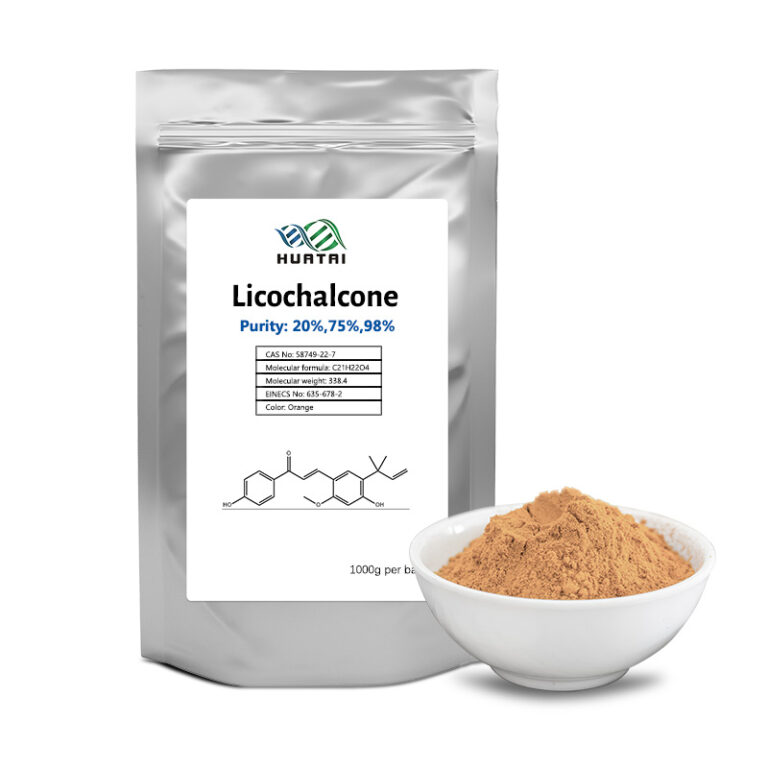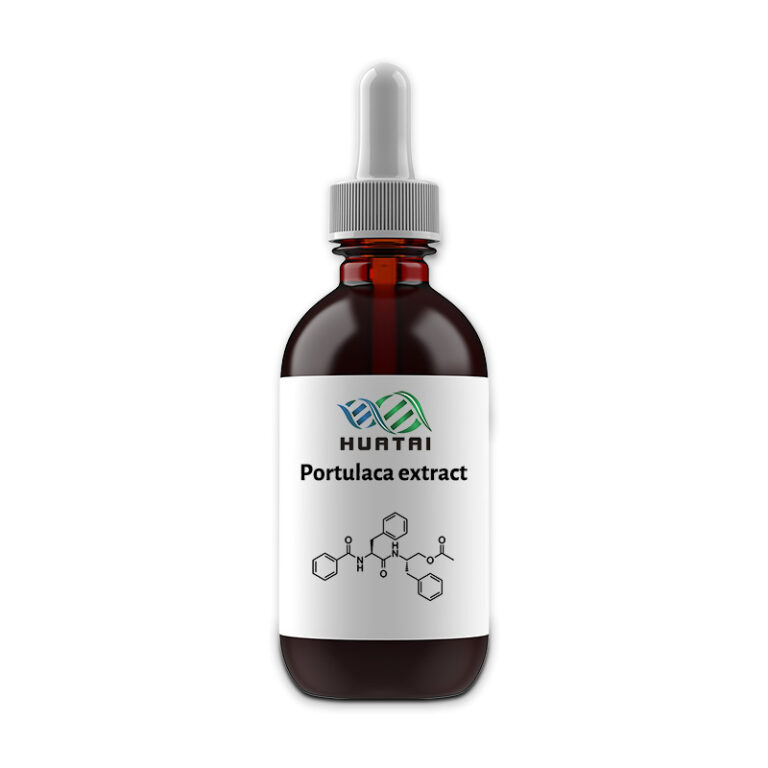
- Chemical structure and properties
- Licochalcone belongs to the flavonoid compounds. Its molecular structure has multiple phenolic hydroxyl groups, which endow it with certain chemical activity. In terms of physical properties, it is usually yellow to brownish-yellow crystalline powder. In terms of solubility, licochalcone has good solubility in organic solvents such as ethanol and methanol, while its solubility in water is relatively low. Its chemical stability is good, but under extreme conditions such as strong acids, strong alkalis or high temperatures, its chemical structure may change.
- Source
- It mainly comes from licorice plants. Licorice is a common medicinal plant, and its roots and stems contain abundant licochalcone. Through a series of extraction and separation techniques, such as solvent extraction and column chromatography separation, licochalcone of different purities can be obtained from licorice.
- Efficacy in skin care and beauty
- Anti-inflammatory:
- Licochalcone can effectively inhibit inflammatory reactions. It can inhibit key enzymes in the inflammatory process, such as cyclooxygenase-2 (COX-2) and lipoxygenase (LOX). These enzymes will catalyze the production of inflammatory mediators such as prostaglandins and leukotrienes. By inhibiting the activity of these enzymes, licochalcone can reduce the production of inflammatory mediators, thereby reducing inflammatory symptoms such as redness and itching of the skin caused by allergies and ultraviolet radiation. It is of great significance for the care of sensitive skin.
- Antioxidant:
- Due to the phenolic hydroxyl groups in its molecular structure, licochalcone is an excellent antioxidant. It can remove various free radicals in the body, including superoxide anion free radicals, hydroxyl free radicals and peroxy free radicals. Free radicals can cause oxidative damage to biological macromolecules such as lipids, proteins and DNA of skin cells, leading to cell dysfunction and skin aging. Licochalcone combines with free radicals by providing hydrogen atoms to terminate the free radical chain reaction, thereby protecting skin cells from oxidative damage, helping to delay skin aging, maintain skin elasticity and luster, and reduce the occurrence of wrinkles and pigmentation.
- Antibacterial:
- It has an inhibitory effect on common bacteria and fungi. For example, it can inhibit the growth of bacteria such as Staphylococcus aureus and Escherichia coli, and can also inhibit the reproduction of fungi such as Candida albicans. Its antibacterial mechanism may be related to destroying the cell membrane structure of microorganisms and interfering with the metabolic process of microorganisms. In skin care, this antibacterial effect can prevent and treat skin problems caused by microbial infections, such as acne and tinea corporis, and keep the skin clean and healthy.
- Anti-inflammatory:
- Application prospects in the medical field
- The anti-inflammatory and antioxidant properties of licochalcone also make it have potential application value in the medical field. In research, it may be used to develop drugs for treating inflammatory diseases (such as arthritis, enteritis, etc.) and oxidative stress-related diseases (such as cardiovascular diseases, neurodegenerative diseases, etc.). However, most applications are still in the research stage, and further clinical trials are needed to verify its efficacy and safety.
- Safety and precautions
- Generally speaking, within a reasonable range of use, licochalcone is relatively safe. But since it is mainly derived from licorice, and licorice contains ingredients such as glycyrrhizic acid, long-term or excessive use may cause some adverse reactions such as elevated blood pressure and reduced blood potassium. When using products containing licochalcone, especially high-purity or high-dose products, it is necessary to follow the product instructions and the advice of professionals.

















